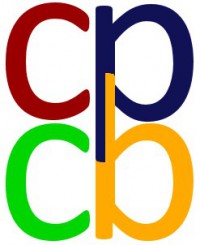Anton-Created “Movies” of Key Nerve Cell Protein Reveal
Unexpected Mechanism
June 18, 2013
Consider the humble clothespin.
Merely looking at a static photo of one enables us to see how it works. Its arms pivot around the spring, jaws opening to grab a T-shirt, then pivot closed again.
When we look at the complex molecules inside living cells, though, it isn’t always clear that the static image gives us enough information to get it right. In the case of the aspartate and glutamate neurotransmitter transporters of the brain’s nerve cells, static X-ray pictures had offered a fairly compelling argument for how the transporters work. Trouble is, the pictures were misleading.
Using PSC’s Anton computer, Elia Zomot and Ivet Bahar of the University of Pittsburgh School of Medicine have created “movies” of the transporter that show it simply can’t move the way that the static images had hinted. By gaining additional insight into the true mechanism of action, the researchers have helped improve our understanding of a component involved in the progressive death of nerve cells, like stroke or Alzheimer’s disease. The researchers reported their results in the Journal of Biological Chemistry in November 2012
A very interesting machine
The space between a nerve cell and another nerve cell to which it communicates is called the “synapse.” When a nerve cell fires, it floods the synapse with chemical messengers called neurotransmitters. This in turn causes the second cell to fire. The transmitter molecules remaining in the synapse afterward, though, pose a problem.
“It’s important to clear excess neurotransmitter from the synapse,” says Bahar, John K. Vries Chair in Computational & Systems Biology at Pitt. “When you have such an excess … you can develop neurodegenerative diseases” like Alzheimer’s, Huntington’s, epilepsy or the nerve-cell death following stroke or brain trauma.
The glutamate and aspartate transporters are proteins that form channels across the nerve cell’s outer membrane. These transporters pump either glutamate or aspartate out of the synapse and into the cell, using the tendency of sodium ions to flow into the cell as a power source, says Zomot, first author of the journal article and a research associate in Bahar’s laboratory.
The protein has two faces, which pivot open and closed, a little like the opposite ends of a clothespin. It starts with its outside-facing end open. When both a neurotransmitter molecule and two sodium ions attach to binding sites in the channel at the center of the transporter — about where the spring is in a clothespin — the outward face swings closed. This motion opens the transporter’s inward face, releasing both transmitter and sodium ions into the cell.
“It’s a very interesting machine,” Bahar says. “It opens up, lets the transmitter in, then closes down, changing conformation and becoming inward facing so it can release the transmitter without leakage.”
Devil in the details
The problem, though, was in the details. In the static X-ray images, a loop in the transporter protein’s structure, called HP1, appears initially to block the channel near the central pivot point. If that were true, HP1 would work by moving aside and letting the transmitter and sodium ions into the cell when the protein pivots.
“People made inferences that this region was probably functioning as a gate,” Bahar says. “But this was based only on static images.”
Zomot and Bahar used Anton, designed and constructed by D. E. Shaw Research, to simulate the motions of the transporter as it pivoted. PSC hosts Anton for use by the national biomedical community as part of a collaboration between the company and PSC’s National Resource for Biomedical Supercomputing. Zomot and Bahar acquired time on Anton through a grant from the National Center for Multiscale Modeling of Biological Systems, a National Institutes of Health-funded collaboration between PSC, Pitt, Carnegie Mellon University and the Salk Institute.
Anton was very different from other systems Zomot has used. But learning its ways offered serious advantages, he says. “Once you become familiar with it, you find out that it’s really worth the effort of learning the system. You can accomplish much, much more than you could with the other supercomputing clusters that we usually have access to.”
Bahar agrees. “In a few hours, the machine generates what another would in months.”
Worth millions of pictures
Anton created a virtual model of a specific member of the glutamate/aspartate transporter family, an aspartate transporter called GltPh. Using ball-like atoms connected by spring-like molecular bonds, the computer calculated how all the different parts of the transporter would move around as they experienced normal atomic movements and vibrations.
The model delivered a bit of a surprise: HP1, which had been a favorite bet to be the gate based on the X-ray work, was not in the way (see left). Instead another loop, HP2, did seem to function as the gate. This is an important discovery, potentially saving countless hours of drug development revolving around the wrong molecular target.
“Now we know really how it functions,” Bahar says. “If you want to understand function, you need to see how it moves… If a picture is worth a thousand words, a movie is worth millions of pictures.”
The researchers are getting ready to study another neurotransmitter transporter — one similar to those that move the brain neurotransmitters dopamine, serotonin and others out of the synapse.
“We have another allocation on Anton,” Zomot says, and studies of the leucine transporter, which is more distantly related to the glutamate/aspartate transporters, could reveal both common mechanisms and useful differences for drug developers wanting to affect one but not the other. With Anton, “finally we have the option to do this type of study in a reasonable amount of time.”
“A Million Little Pictures.” Pittsburgh Supercomputing Center. 18 June 2013 <https://www.psc.edu/index.php/newscenter/43-annual-report/840-a-million-little-pictures-key-nerve-cell-protein-doesnt-work-as-expected>


 Congratulations to our cohort of December 2013 and August 2014 graduates!
Congratulations to our cohort of December 2013 and August 2014 graduates!